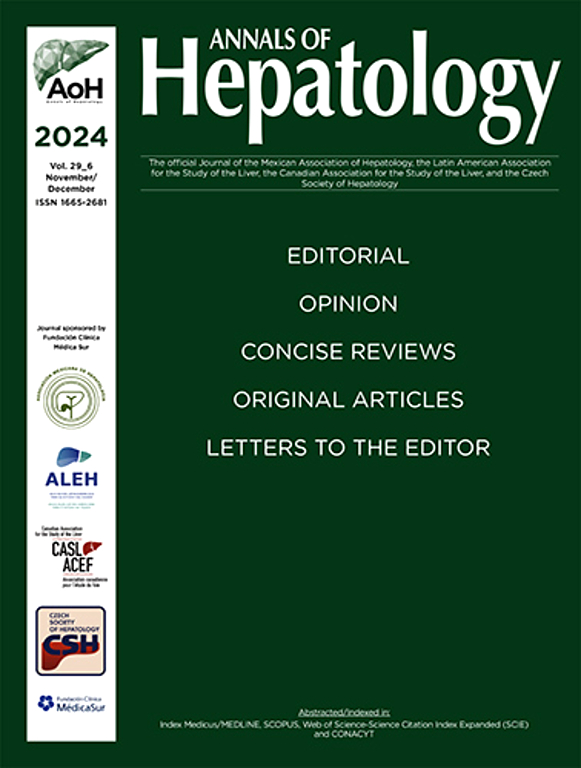Body mass index and diabetes predict severity of liver fibrosis across the spectrum of steatotic liver disease
IF 3.7
3区 医学
Q2 GASTROENTEROLOGY & HEPATOLOGY
引用次数: 0
Abstract
Introduction and Objectives
Recent evidence indicates that metabolic dysfunction and alcohol-associated steatotic liver disease (MetALD), a newly defined subgroup of steatotic liver disease (SLD), may have a worse prognosis than metabolic dysfunction-associated steatotic liver disease (MASLD). This study examines the clinical factors influencing the severity of MetALD to inform and improve future management strategies.
Patients and Methods
Data from the 2017-2020 National Health and Nutrition Examination Surveys (NHANES), involving 7745 adults with valid elastography measurements, were utilized to define and estimate the prevalence of MASLD, MetALD, and alcohol liver disease (ALD). Controlled attenuation parameter (CAP) ≥285 dB/m, liver stiffness measurement (LSM) ≥8 kPa, and ≥12 kPa indicated the presence of hepatic steatosis, clinically significant fibrosis, and advanced fibrosis, respectively.
Results
The prevalence of MetALD was 4 % (N=287), compared to 24 % (N=2049) for MASLD and 7 % (N=486) for ALD. The prevalence of significant fibrosis and advanced fibrosis in MetALD was 10.8 % and 3.1 %, respectively, compared to 24.7 % and 9.8 % in MASLD, and 15 % and 8 % in ALD. Logistic regression analysis among MetALD patients showed that higher body mass index (BMI) (odds ratio [OR]: 1.15, 95 % CI: 1.08-1.23, P<0.01) and diabetes mellitus (DM) (OR: 3.0, 95 % CI: 1.06-6.2, P<0.01) were associated with an increased risk of fibrosis. These factors were also identified as independent risk factors for fibrosis in patients with MASLD and ALD.
Conclusions
MetALD had the lowest prevalence and fibrosis severity among the three groups of SLD. Elevated BMI and DM were associated with the severity of liver disease, and these findings provide a rationale for the use of obesity- and diabetes-targeted medications in these individuals.
求助全文
约1分钟内获得全文
求助全文
来源期刊

Annals of hepatology
医学-胃肠肝病学
CiteScore
7.90
自引率
2.60%
发文量
183
审稿时长
4-8 weeks
期刊介绍:
Annals of Hepatology publishes original research on the biology and diseases of the liver in both humans and experimental models. Contributions may be submitted as regular articles. The journal also publishes concise reviews of both basic and clinical topics.
 求助内容:
求助内容: 应助结果提醒方式:
应助结果提醒方式:


